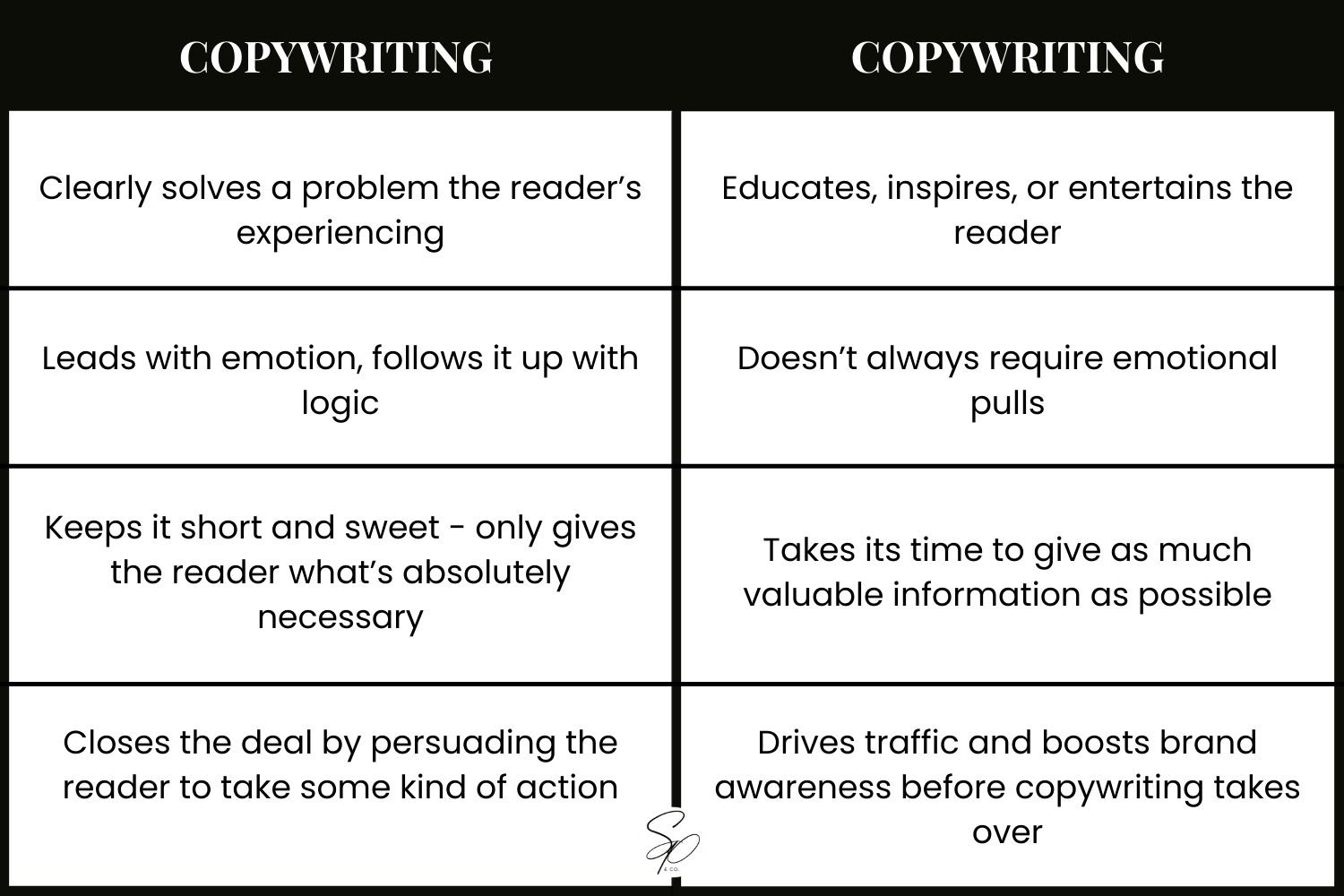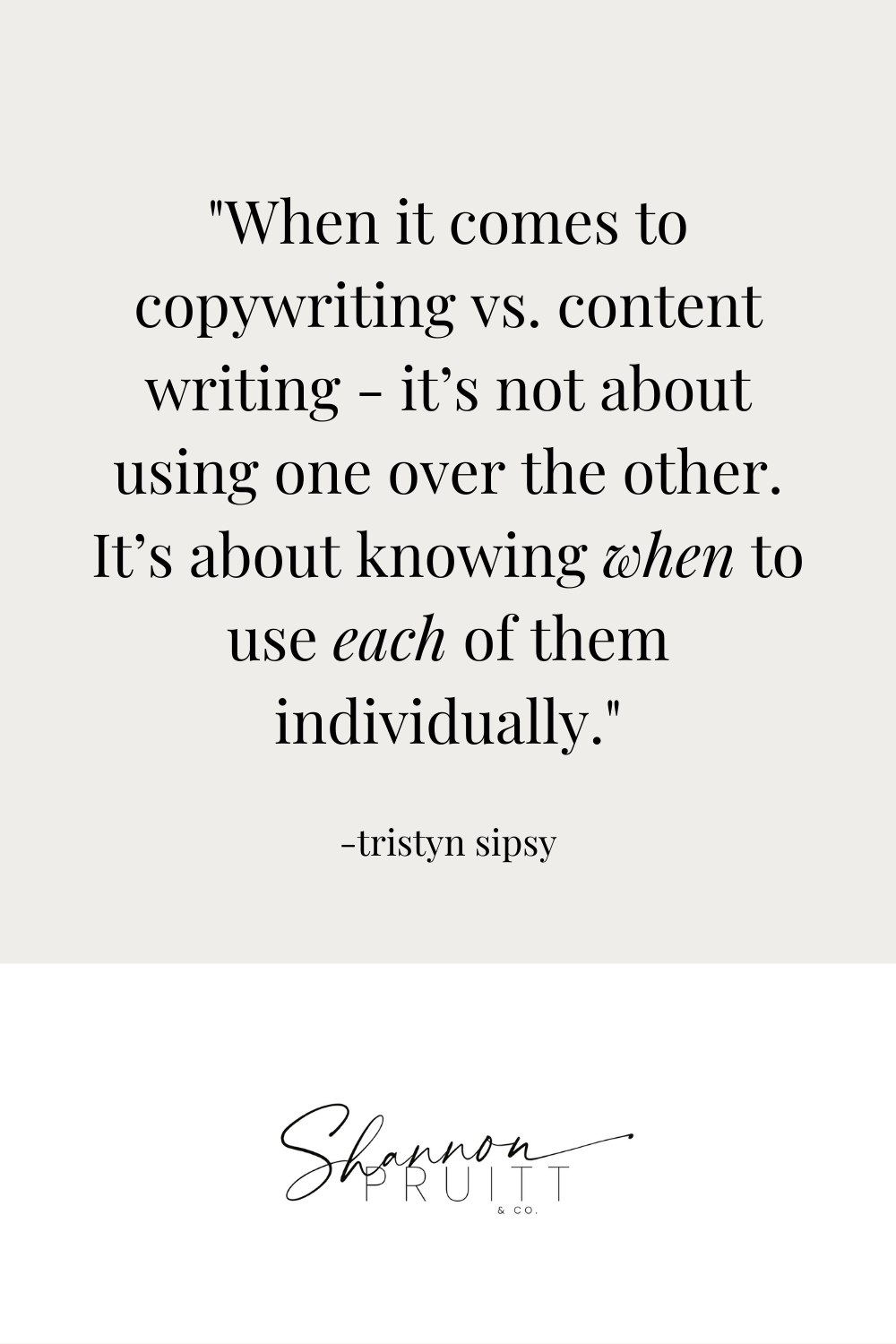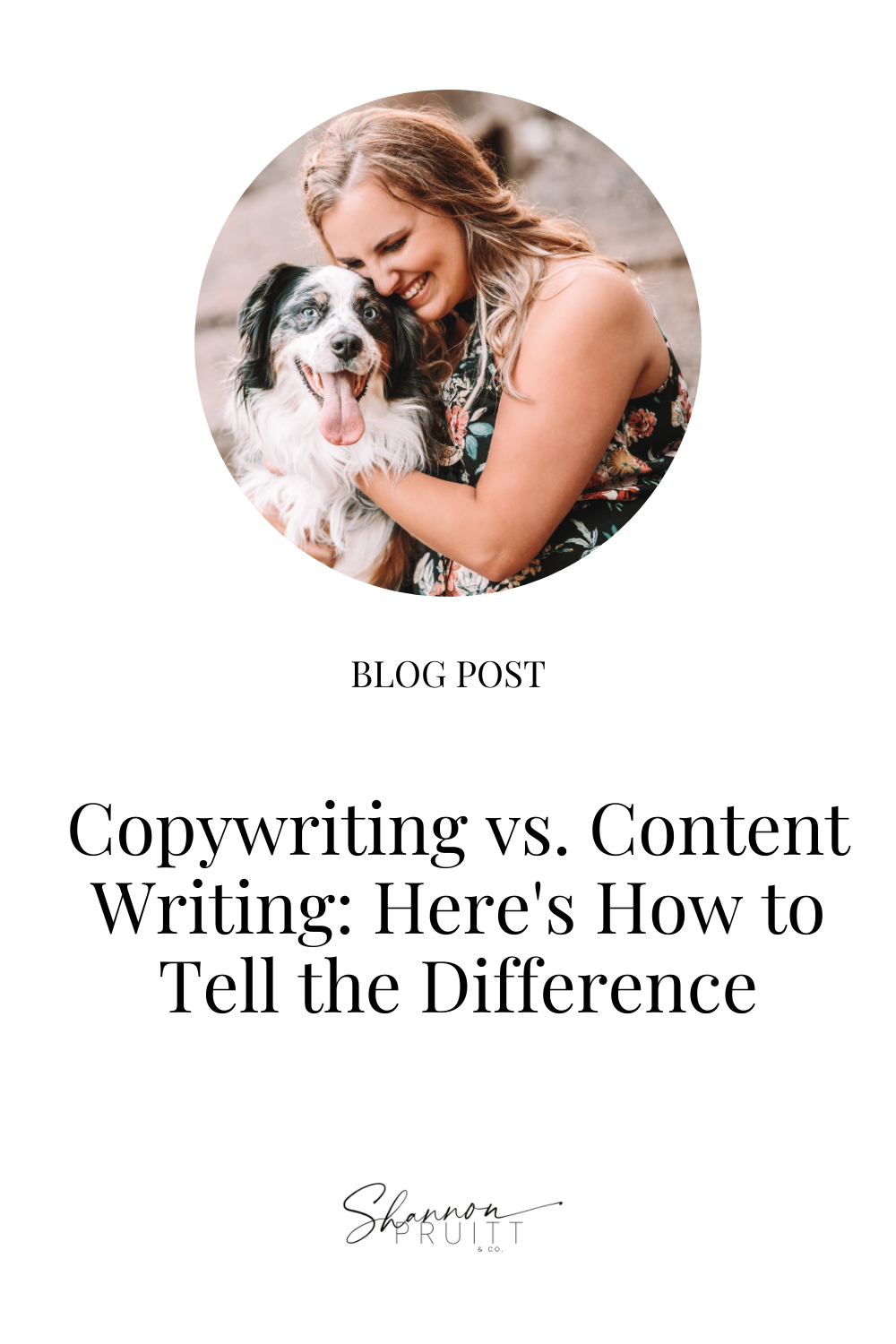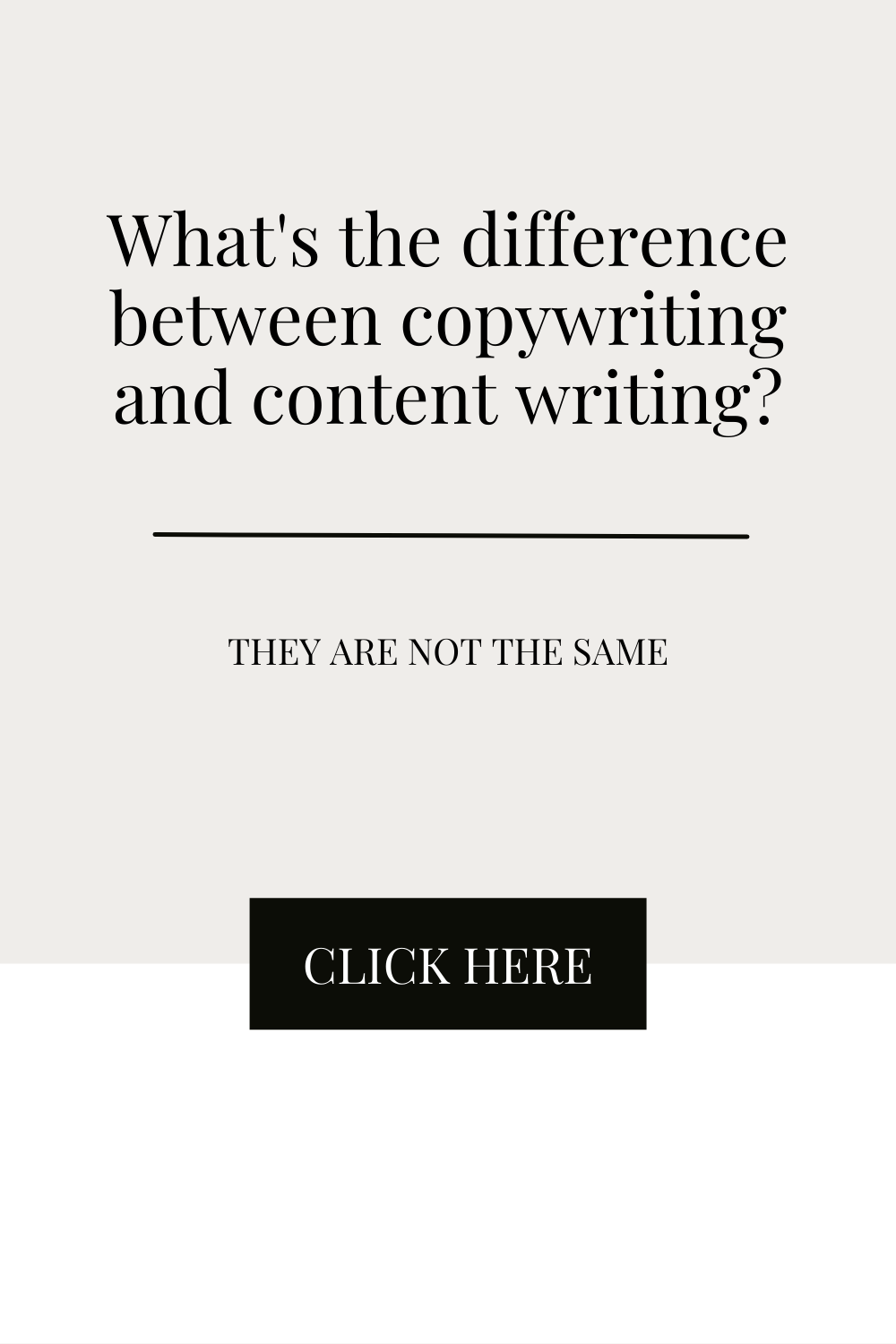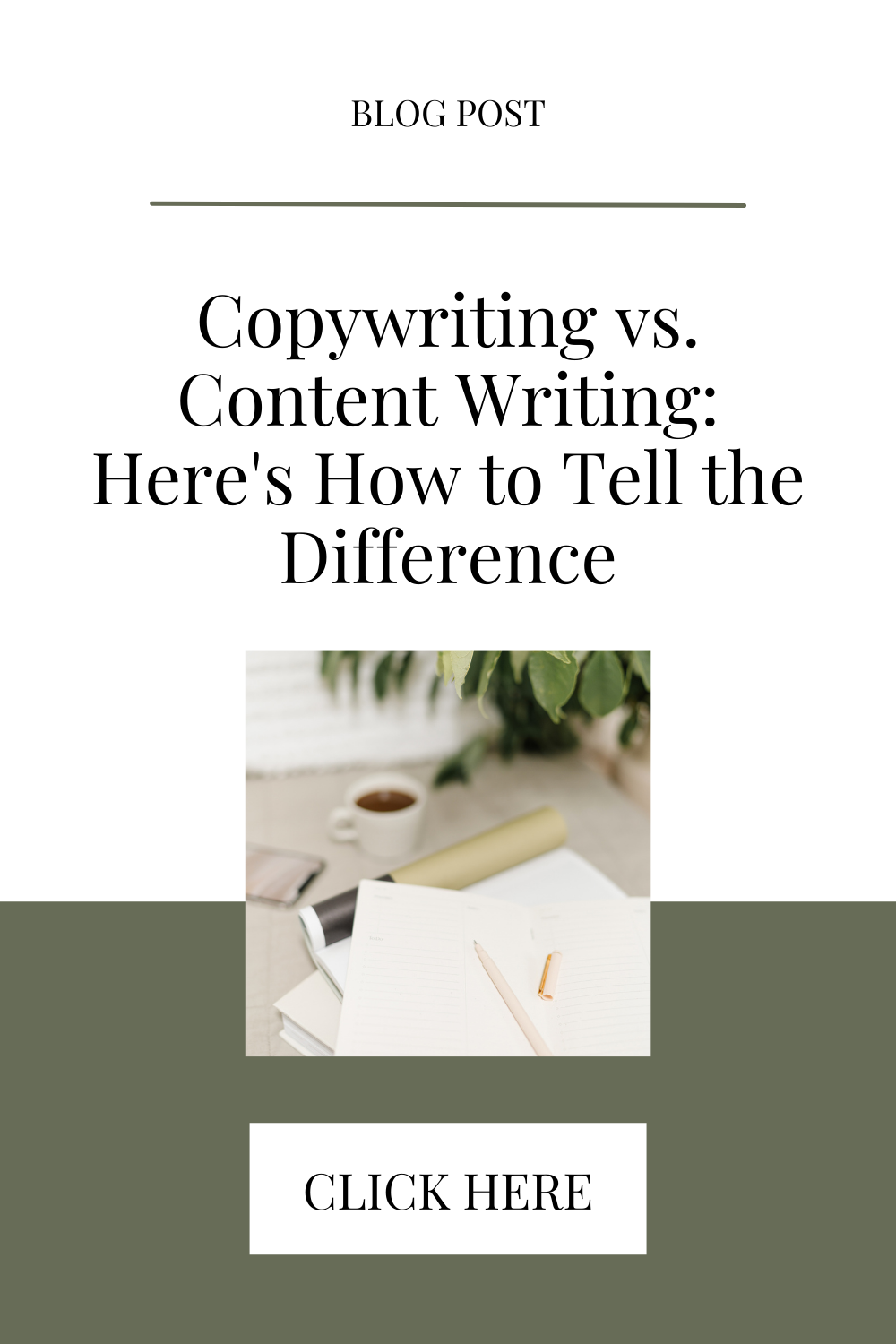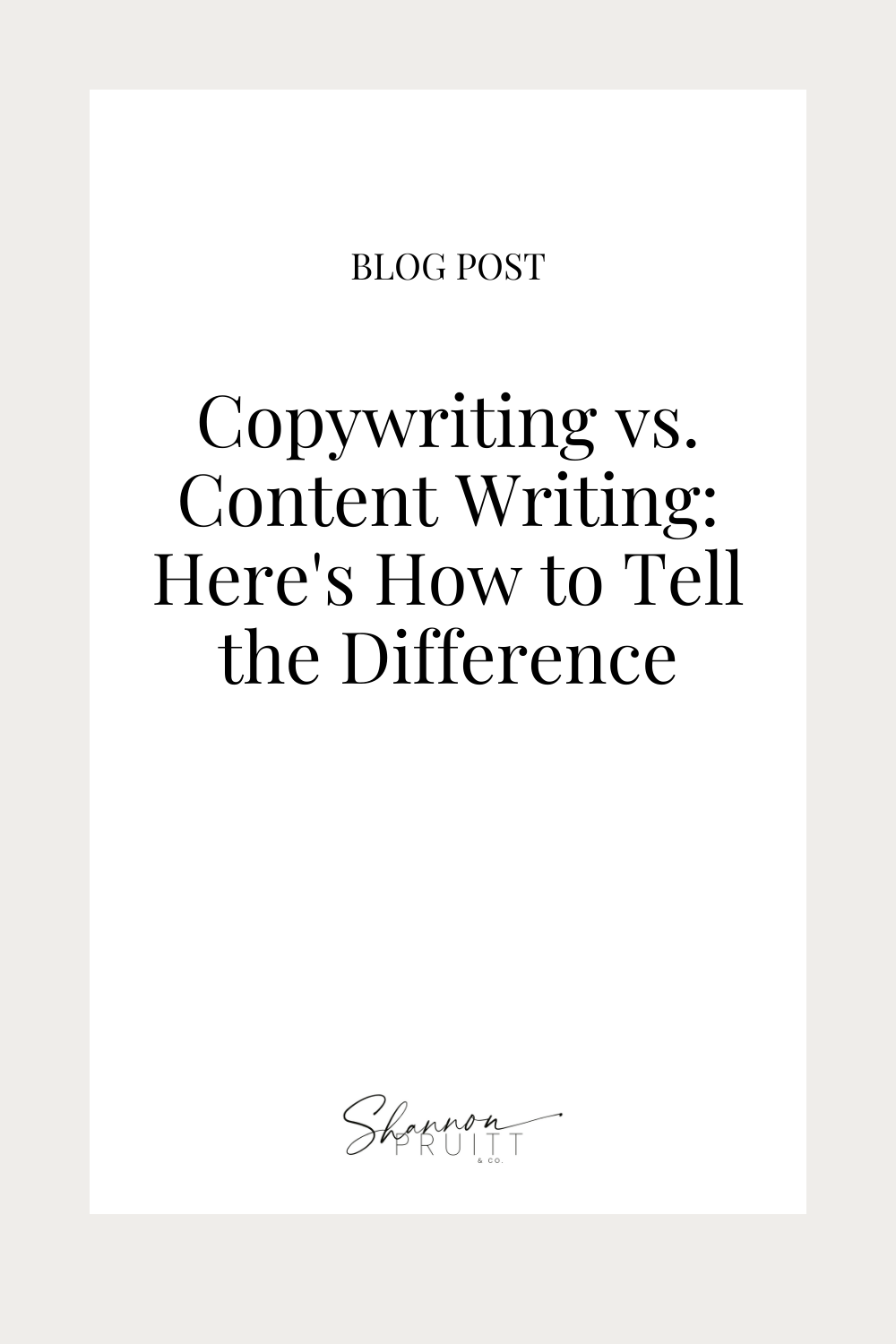
Copywriting vs. Content Writing: Here’s How to Tell the Difference
Hey there, friend! I’m Tristyn, of Sipsy Ink – a copywriting studio for creatives and purpose-driven brands. And I’m super excited to take over the Shannon Pruitt & Co. blog to chat about one of my faaavorite topics.
Copywriting vs. Content Writing!
As business owners and entrepreneurs, we’re wearing lots of hats. (I mean really – I’m making the Queen of England jealous over here with all these hats I’m wearin’.)
And one of those lovely hats we wear? Well, it’s none other than our marketing strategies and efforts.
From your blog posts, to your social media captions, to your email newsletters, and down to your website copywriting itself. All those lovely tools are part of your overall marketing strategy.
But, today. I wanna talk a little bit about two specific terms I hear mixed up a lot.
And that’s copywriting versus content writing.
This is one of those classic … a round peg can fit into a square hole, but not so much the other way around.
Because copywriting can often be considered content writing. Buuut content writing? It ain’t copywriting.
So let’s get down to it!
Copywriting vs. Content Writing: What is Copywriting?
Copywriting is persuasive writing, particularly to get your readers to engage in some type of action in your marketing funnel. And that means it’s usually used closer to the middle and end of your funnel.
Because the end goal, as your beautiful readers move through the funnel, is to have them purchase or invest in something. That could be your products, services, or whatever it is you’re offering!
The main goal of copywriting is to ask your readers to take any kind of action.
For example, if you ask your readers to sign up for your email list with a lead magnet and a stellar call to action button. < Bam! That’s copywriting!
Or, you ask your readers to sign up for a free discovery call to chat more about what they need in their business.
That’s another example of copywriting!
You’re usually gonna use copywriting for:
-
Your paid social media ads
-
Your landing pages
-
Your sales pages
But in the moment – it can be a little difficult to see what the key elements of copywriting are.
So lemme break those down for ya!
Clearly Solves a Problem –
The whole point of copywriting is to solve some kind of problem! Or at least to get readers on the way to solving some kind of problem.
Usually, once a reader’s ready to start reading a sales page, or even a website, they know a little about what they’re looking for to solve a problem.
And that copy? Is going to tell them how the product or service does take away the problem they’re experiencing.
Leads with Emotion –
Copywriting, for the most part, is always going to lead with emotion first. It’ll use descriptive, powerful, emotional words to help readers feel what they’re saying.
Because that’s how people make the majority of their decisions. They need to feel it’s going to solve a problem they’re facing. And then, they need to know that the solution is actually going to work for them!
Keeps It Short and Sweet –
Ever heard that phrase “kill your darlins’?”
Oooh. Lemme tell ya. Copywriters? Oh, we’ve heard it. And we know the power behind it.
We know, when it comes to copywriting, keeping things short and sweet? Is more one of the most important factors.
Copywriters know that time is money, baby!
We know when someone is a warmer lead, they don’t need a whole lot to close the sale.
What they do need is perfectly, strategically placed words that reassure the readers they’re making the right decision.
So we kill our darlins’. We nix any unnecessary words, sentences, or even whole paragraphs.
And yes, it might be painful for us to do it! (Oh yes, I’ve cried one too many times over this.)
But we know – for our readers? Time and energy are of the essence. Wasting our readers’ brain power on anything that’s absolutely not needed can cost us the action we’re wanting the reader to take.
Copywriting Closes –
Like I mentioned earlier, the whole point of copywriting is to get people to take action. And ultimately, whether it’s today or 3 months from now, that looks like closing the sale.
And copywriting can’t be afraid to ask for the sale, either! That’s its whole job.
So if you’re trying to market your services or offerings online, you gotta use copywriting (and all the strategies and techniques that come along with it) to close that sale!
If you’re trying to book out your services, you gotta turn that traffic into leads.
Otherwise … how’re you gonna meet your bottom line?
Copywriting vs. Content Writing: What is Content Writing?
Okay, we know what copywriting is. But what is different about content writing?
When it comes to copywriting vs. content writing, it really comes down to purpose. Because like we said – copywriting is designed to close the sale.
Content writing, on the other hand, is written to do one of three things:
-
Educate the reader
-
Inspire the reader
-
Or entertain the reader
That’s really it!
So if we’re thinking about your marketing funnel, here, content writing marketing is up at the top.
It’s your unpaid social media captions.
It’s your blog posts.
It’s your eBooks or PDFs you use as lead magnets.
That’s all content writing!
But, just like before, it might be hard to pinpoint what makes something content writing instead of copy.
So, I’mma break that down for ya, too!
Takes All the Time in the World –
So, to do one of those three things up above (entertain, educate, or inspire), your content’s gotta give value!
I know, I know. Every guru on the ‘gram says “give value!”
But they’re right. That’s where content writing steps in.
Instead of using one or two lines to persuade (like in copywriting), content writing knows it can take its time explaining something.
Because shorter content might not always explain or entertain the way it needs to. So content writing (like your blog posts) might be somewhere between 500 and 2500 words (if not longer).
Cares More About Brand Awareness –
Content writing knows we aren’t making a sale yet. We’re still in the upper phases of the marketing funnel when someone stumbles on a blog post.
And that means content writing focuses on building that brand awareness. Building that like, know, trust factor.
We’re not closing anything. We’re just educating, inspiring, and entertaining our readers to build stronger connections with them!
Drives Traffic –
While copywriting turns traffic into leads, content writing is what gets you traffic in the first place.
Whether you’re focusing on the ‘gram to build your brand awareness and get readers to your site…
Or you’re using blog posts and SEO to rank on the Googs…
Content writing is what you gotta use to do it!
Once your content writing drives the traffic, copywriting can step in later to turn your traffic into leads (or sales!).
Copywriting vs. Content Writing – The Side by Side Difference!
So what does copywriting vs. content writing look like side by side, then?
Here’s a quick little chart to compare the differences between the two!
When it comes to copywriting vs. content writing – it’s not about using one over the other. It’s about knowing when to use each of them individually.
Because in your overall marketing strategy, you’re gonna need both.
So keep this post handy when you’re gettin’ ready to write for your brand! And feel free to peruse the Sipsy Ink blog for more on copywriting and content writing for your business!
You might also be interested in…

